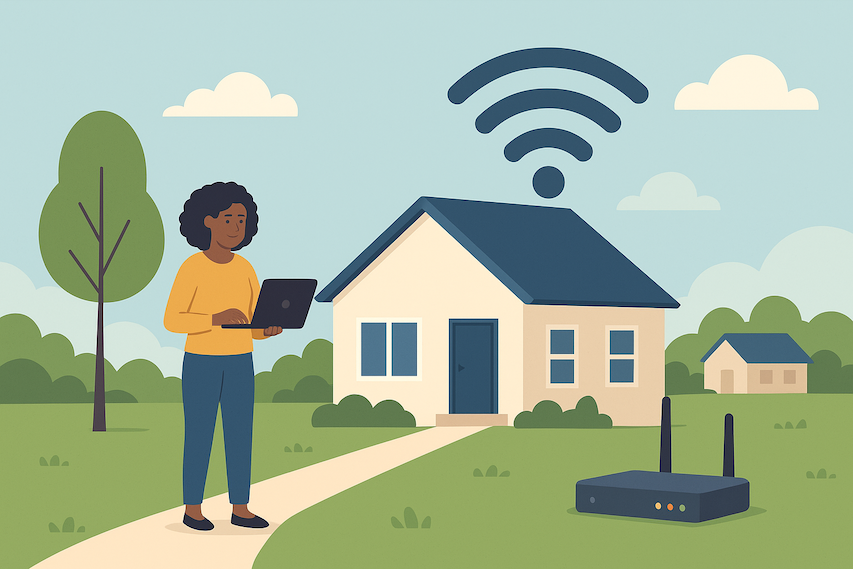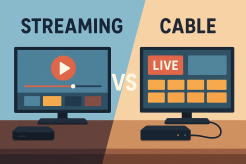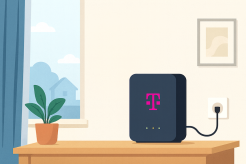Cost of Internet in a New Home: What Every Mover Should Know

Moving into a new home is exciting, but it comes with a list of expenses beyond the obvious rent or mortgage. Among these, internet costs often catch newcomers by surprise. Understanding the real cost of internet in a new home can save you both money and frustration, especially if you rely on fast and reliable connectivity for work, streaming, or gaming.
In this guide, we’ll break down the factors that influence internet pricing, explore options for different budgets and locations, and provide tips to make sure your internet service matches your household’s needs.
Why Internet Costs Vary
Internet prices aren’t uniform. Several elements determine how much you’ll pay:
1. Location and Infrastructure
Your new home’s location heavily impacts cost. Urban areas often have multiple providers competing for business, which can lower prices. Rural areas, however, may have limited options, resulting in higher rates. If you’re curious about the speeds available in less populated areas, check out this guide on internet speed to see what you can realistically expect.
2. Type of Internet Connection
The type of connection you choose affects both speed and price:
- Fiber-optic: High speed and reliability, usually more expensive upfront.
- Cable: Widely available, good speed, moderate pricing.
- DSL: Slower speeds but often cheaper, common in older neighborhoods.
- Satellite: Available almost anywhere, higher latency, may cost more for comparable speeds.
Choosing the right type is essential to avoid overpaying for services you don’t fully need.
3. Speed Requirements
Different households have different needs. A single user browsing casually will need less bandwidth than a family working from home, attending virtual classes, or streaming HD content simultaneously. Learn what speed fits your lifestyle by exploring recommendations for rural internet providers.
Understanding Extra Costs
Beyond your base monthly fee, there are other costs that can add up quickly:
Equipment Fees
Many providers charge for routers or modems, and some even rent them monthly. Buying your own equipment can reduce long-term costs and often provides better performance.
Installation Charges
New homes may require professional installation, particularly if your connection type is fiber-optic or cable. Installation fees vary by provider, and some offer promotions that waive this cost.
Hidden Fees
Taxes, early termination fees, and other service charges can surprise first-time subscribers. Reading the fine print helps you avoid unexpected bills.
Options for Every Budget
Internet doesn’t have to break the bank. Understanding affordable choices ensures everyone gets connected without compromising quality.
Affordable Family Plans
If you’re on a tight budget, there are plans specifically designed to provide reliable service for low-income households. You can compare internet options that offer the right balance of speed and cost.
Mobile Hotspots and Alternatives
Some households may benefit from mobile internet. Comparing plans before switching to a mobile service is crucial to ensure you get coverage and speed without overspending. Start with tips on mobile plans before committing.
Tips for Reducing Internet Costs
Here are practical ways to manage your internet expenses in a new home:
- Bundle Services: Some providers offer discounts if you combine internet with TV or phone service.
- Negotiate Your Rate: Don’t be afraid to call your provider and ask for promotions or lower rates.
- Use Your Own Equipment: Avoid monthly rental fees by purchasing your modem or router.
- Evaluate Your Needs: Opt for speeds that match your usage; paying for extreme speeds isn’t necessary if your household has minimal internet demands.
Making the Right Choice
Choosing the best internet plan involves balancing speed, reliability, and cost. Take time to evaluate providers, read reviews, and compare coverage in your area. By planning ahead, you’ll avoid surprises and ensure your new home is ready for work, entertainment, and staying connected.
Final Thoughts
The real cost of internet in a new home goes beyond the monthly bill. Considering installation fees, equipment costs, and hidden charges ensures you have a realistic budget. Whether you’re in a rural area, a low-income household, or simply looking for the best value, there are options to meet your needs without overspending.
Investing a little time in research now can save a lot of money and frustration later, making your move smoother and more enjoyable.
Related Posts

Mon, Nov 24, 2025 9:38 PM
cable dealStreaming vs. Cable: Which TV Service Truly Delivers the Better Experience?
Explore the complete comparison of streaming vs cable TV. Learn the pros, cons, costs, and performance differences to decide which service fits your lifestyle.

Fri, Nov 21, 2025 7:39 AM
Internet BundlesTop Internet Providers for Small Businesses Today
Discover the top internet providers for small businesses, including Verizon, AT&T, Spectrum, Comcast, and Viasat. Compare speeds, features, pricing, and reliability to find the best connection for your business.

Fri, Nov 21, 2025 4:00 AM
Internet BundlesBest Rural Internet Providers in the US: What to Know Before You Choose
We have schedules, rates, and pricing for the top three big internet providers in rural America. Since few internet providers create networks in small towns, your internet choices in rural areas are minimal. In rural America, however, Xfinity, CenturyLink, and Viasat all provide internet access.

Wed, Nov 19, 2025 10:57 PM
Broadband InstallationHow to Set Up T-Mobile 5G Home Internet
Learn how to set up T-Mobile 5G Home Internet with a step-by-step guide. Includes placement tips, activation steps, speed testing, and troubleshooting advice.

Tue, Nov 18, 2025 12:00 AM
RegulationsKinetic by Windstream Data Caps: What You Really Need to Know
Get the facts about Windstream data caps, how they work, what limits apply, and what this means for your internet usage. Learn whether Windstream truly offers unlimited data and what to expect.